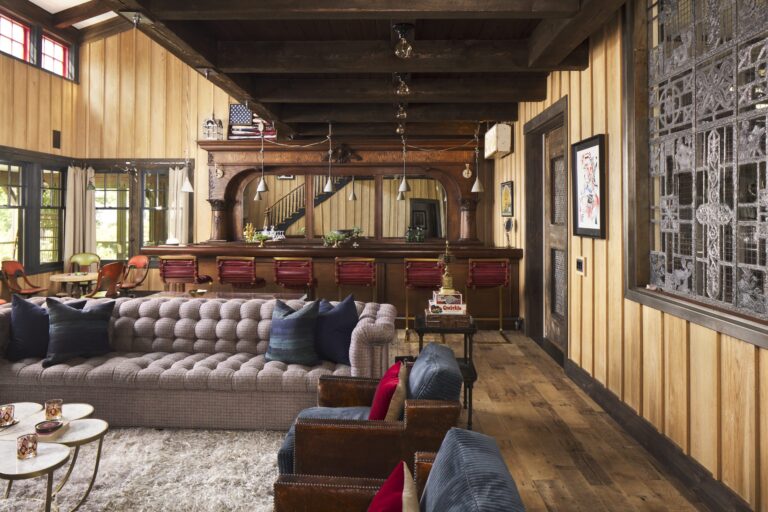Pictures from David Bader

Longing for a home away from home, a family of four began working with her Wade Weissmann Architecture to create a large shingle-style home in Lake Geneva, Wisconsin. This initial project went smoothly, and after the house was completed, the clients purchased additional acreage next door. The land had empty pockets with plenty of room for opportunity, so Weissmann was once again invited to undertake a second mission.
When she sat down with customers to brainstorm ideas for what this accessory could become, she paid close attention to who they are, their commitment to a healthy life, and their passion for a biodynamic life. “They became very interested in developing what was becoming their lifestyle,” says Weissmann. Taking all of the above into account, he created a unique stadium: an absolute sports barn.

Weissmann presented the concept for the 7,500-square-foot space, complete with a half-court gym, rock climbing wall, volleyball net and batting cage. cold plunge pool and sauna. and a loft with shuffleboard, arcade games and lake views from the eagle's nest. Clients fell in love with Weismann's court, trusting Weissmann's vision for the entertainment building. “It might look indulgent,” Weissmann says, “but when you really look at how all the elements came together on the site, it wasn't to look indulgent—it was to look like it was kind of domesticated and redesigned. “
With the green light from the clients, Weissmann's team began building the barn. The clients were very environmentally friendly and expressed their concerns about changing the land during the construction process. “to figure out how we could do that in a way that's in harmony with the environment,” says Weissmann. But quickly, he and the team faced a challenge—the construction site sloped up a hill, where summer storms sent streams of water tumbling down. The civil engineers on the project were tested by the slope, but Weissmann says the team worked over the hurdle day after day, keeping the land as natural as possible.

Once the rain stopped and the foundation was in, Weissmann turned his attention to the exterior. Weathered boards and wood decks were some of the repurposed materials used in the Midwest-style barn, giving the space a natural presentation. Other earthen pieces were also incorporated, including exposed stone foundations and a copper roof. All these elements end up in a customer-centric space. “The project itself is a reflection on a very interesting, dynamic client [who] he has all these personal interests and these beautiful pursuits that we were able to embrace and incorporate as motivation for an aesthetic,” says Weissmann.
This aesthetic, spearheaded by Tina Simonds Simonds Design, is brought inside, where a silo-like fireplace emphasizes the scale of the two-story assembly hall. The first floor fitness center located at half court allows customers' family and friends to enjoy all their sporting interests without ever leaving the comforts of home. Restored pieces also make an appearance inside, including an ornate iron gate that allows open viewing from one sports area to the other.
For the less busy, there are spots throughout the barn to rest and relax. On the other side of the gym, comfortable couches sit next to an antique bar with dozens of stools, perfect for parents to socialize while their kids play. A restored staircase takes guests upstairs to a loft area, complete with shuffleboard, Skee-Ball and sweeping views of the lake, with a fun “arcade” feel. In this ultimate sports barn, there is something to suit everyone's needs.
Customers often host family and friends at the barn, get together for birthday parties and other celebrations. Weissmann still maintains contact with clients, and has even completed projects with them outside of the Midwest. As for the future of this recreational haven, Weissmann dreams of long-lasting fun that stands the test of time. “We hope that our properties will become heirloom-type properties that will really become this backdrop for a rich life that we've lived for decades and decades and generations,” says Weissmann.

